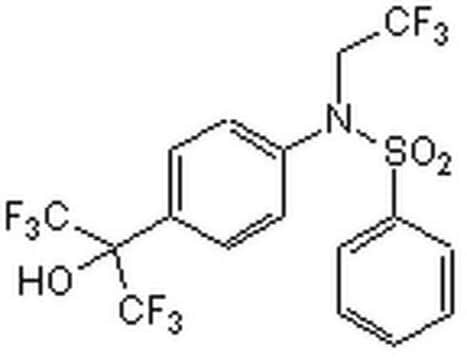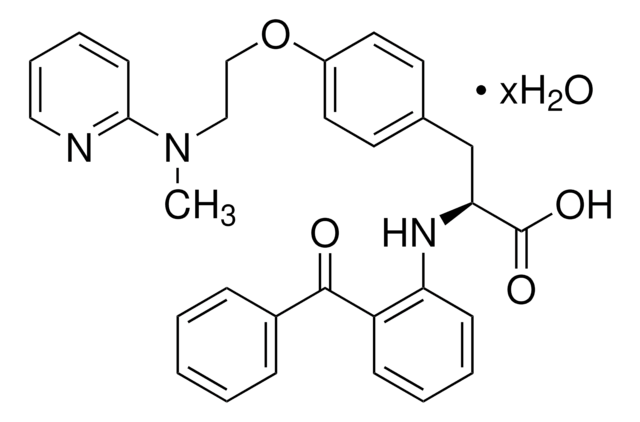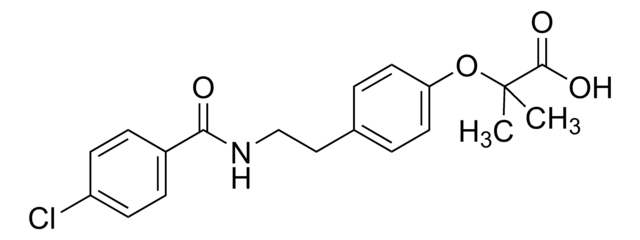G6793
GW7647
≥98% (HPLC)
Synonym(s):
2-(4-(2-(1-Cyclohexanebutyl)-3-cyclohexylureido)ethyl)phenylthio)-2-methylpropionic acid
About This Item
Recommended Products
Assay
≥98% (HPLC)
color
white
solubility
DMSO: soluble 16 mg/mL
H2O: insoluble
SMILES string
CC(C)(Sc1ccc(CCN(CCCCC2CCCCC2)C(=O)NC3CCCCC3)cc1)C(O)=O
InChI
1S/C29H46N2O3S/c1-29(2,27(32)33)35-26-18-16-24(17-19-26)20-22-31(28(34)30-25-14-7-4-8-15-25)21-10-9-13-23-11-5-3-6-12-23/h16-19,23,25H,3-15,20-22H2,1-2H3,(H,30,34)(H,32,33)
InChI key
PKNYXWMTHFMHKD-UHFFFAOYSA-N
Gene Information
human ... PPARA(5465)
Application
- in defatting medium to treat primary human hepatocytes
- to test its effect on the glycolytic function in cardiomyocytes
- to test its effect on infant mouse heart
- in breast cancer MDA-MB-231 cells to activate PPARs
Biochem/physiol Actions
Features and Benefits
Legal Information
Storage Class Code
11 - Combustible Solids
WGK
WGK 3
Flash Point(F)
Not applicable
Flash Point(C)
Not applicable
Personal Protective Equipment
Certificates of Analysis (COA)
Search for Certificates of Analysis (COA) by entering the products Lot/Batch Number. Lot and Batch Numbers can be found on a product’s label following the words ‘Lot’ or ‘Batch’.
Already Own This Product?
Find documentation for the products that you have recently purchased in the Document Library.
Customers Also Viewed
Our team of scientists has experience in all areas of research including Life Science, Material Science, Chemical Synthesis, Chromatography, Analytical and many others.
Contact Technical Service














